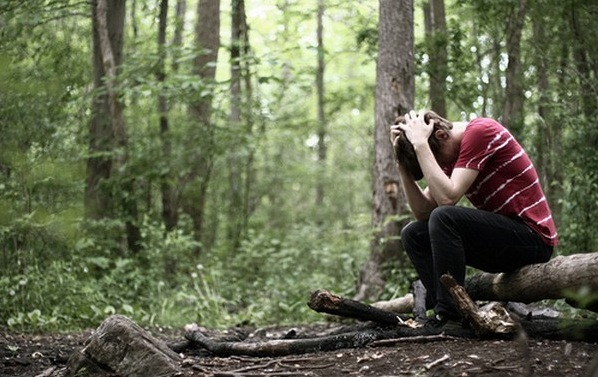It was almost midnight, and I was a getting a little worried. My wife had left after dinner for a short night run with some friends, all of whom are experienced racers. Still, she’d been gone for about five hours, and even accounting for a drink afterward, it seemed like she was late in coming home.
When I finally heard to her key jiggling in the front door, I have to admit I felt relieved. Then she walked into the living room, where I was messing around on the laptop, and I could immediately tell by the look on her face that something unusual had happened. Had someone been injured? Had someone been lost?
Well, as it turns out, yes.
“You. Are. Not. Going. To. Believe….” she started, then burst out laughing. Whew. At least it couldn’t be anything too serious.
Here’s what happened. My wife and her friends had arrived at St. Charles’ Lewis & Clark Trail around dusk, parking next to the one other car in the otherwise empty lot. After gearing up with headlamps and bug spray (it was mid-summer), they started out on five-mile Clark loop just as it was getting dark.
One of her friends who had run the trail before took the lead, commenting how the terrain seemed to have changed some. Severe storms and tornadoes had rolled through the county a few weeks earlier. The group soldiered on, though they had to stop several times to figure out where the path had gone, even being forced to climb through a giant tree that had fallen across the trail a one point.
About two-thirds of the way into the run, one of my wife’s friends suddenly stopped. “Who is that?” he questioned, looking down the trail. Someone in a striped shirt had materialized out of the woods in front of them. “Bill” introduced himself as a man from Florida who had gone out for a hike and had ended up lost. Alone. In the dark. Nine hundred miles from home.
“Are you search and rescue?” he asked.
“Sure!” volunteered one of my wife’s friends.
Bill had already called 911 on his cell phone. By the time the whole crew made it back to the trailhead, they were met by the flashing lights of an ambulance, a fire truck, two cop cars, the park ranger and a flatbed trailer with an ATV on the back. Interviews were conducted, reports were written, stern expressions were levied. Everyone eventually went their separate ways—Bill in his car and my wife and her friends in theirs. A happy ending for all, right?
Yes, in this case. But I think you can see where I’m going with this.
Tips for Going Solo
Running, hiking or biking alone can be liberating and life affirming in a way that group outings can never be. I get that. But you have to be safe and smart about it. Here are a few pointers if you decide to hit the trail all by yourself.
Tell someone where you’ll be. A local family member is the ideal choice, but if you happen to be out of town, a desk clerk at your hotel will work. Let them know where you’re headed and when you expect to be back. Give them your cell phone number and get theirs in return. Tell them who to notify if you don’t show up by a certain time. This will cut down on search and rescue in case of an emergency.
Prepare carefully for your outing. Plan the course you’re going to take and check with local resources to see if the trail presents any special hazards (like recent storm damage). Always take a map unless you’re acutely familiar with the area. Know your expected mileage and stay within your comfort zone. Solo excursions are not the time to push to new extremes. Bring enough food and drink to meet your needs, along with the necessary equipment for the expected conditions. Double-check that you have everything with you before heading out. You won’t have anyone else to rely on if you forget something.
Plan for “what if.” The unexpected can and will happen. Give thought to how you will extract yourself from realistically possible situations before setting out. What if you injure yourself? What if you get lost? What if your cell phone doesn’t work when you need it to? Part of the thrill of solo adventures is being left to your own devices, but this means you need to be extra smart in how you look after yourself. Having some kind of ID and emergency cash is a must.
Know when to bail. What happens if you’ve made your mileage and you aren’t where you’re supposed to be on the map? What if you’ve bonked and just can’t finish the planned route? There’s nothing wrong with turning around and walking back. The trail will lead you home. It might take longer going back than going forward, but then again, you don’t know that. Whatever you do, don’t try to go cross country. Stay on the trail. It’s sure to lead you somewhere.
My wife and her friends look back and laugh about their “lost and found” escapade, but the story is filled with lessons for both novice and veteran outdoor athletes. First among them is be confident but cautious about solo outings. Chances are you might find yourself faced with similar circumstances one day. I hope you end up as lucky as old Bill.
Author: Brad Kovach is the editor of Terrain Magazine.


Leave A Comment